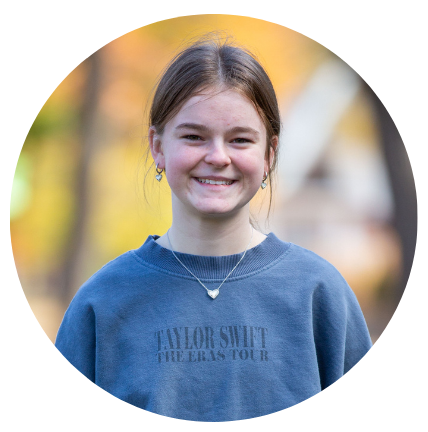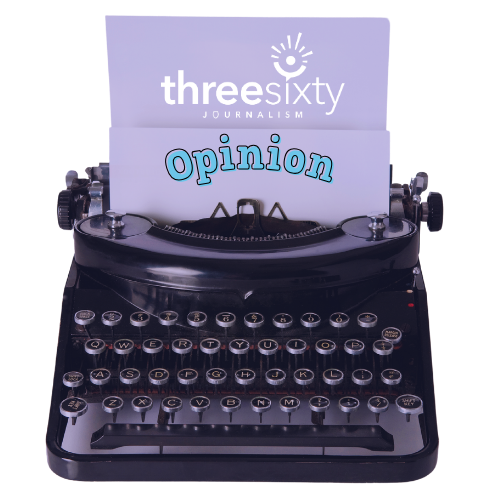
Sophia Elmstrom is a sophomore at Highland Park Senior High School in Saint Paul.
This story was published in Sahan Journal on November 1, 2024.
By Sophia Elmstrom
An abortion gave me life.
My mother was 42 when she was pregnant with me. She had struggled with miscarriages previously and had a procedure called a dilation and curettage (“D&C”), which was classified as a first-term abortion. This procedure was vital. Without it, she would not have been able to get pregnant again.
In 2008, 42 was considered outside the norm for having a pregnancy. Only 14% of births were to women 35 and older. Today half of births are to mothers older than 30. According to Mayo Clinic, more than 100,000 women older than 40 now give birth to children every year in the U.S. Now that more women are giving birth at older ages, abortion protections are more important than ever.
As women age, their egg quality and quantity diminish, increasing likelihood of genetic disorder in the fetus. Many of these women can’t learn about these disorders through testing until their 15-week gestational period.
“But older women who have planned their pregnancies may be more likely to pursue an abortion after 15 weeks because of the higher risk of fetal abnormalities,” wrote Roni Caryn Rabin, a health reporter for the New York Times.
According to the Pew Research Center, only a small percentage of abortions take place after the 15-week gestational mark; 93% of abortions happen before the 13-week mark in the first trimester.
Midlife women who may not realize they are pregnant until the 15-week mark face a challenge. They are left with limited time to run these genetic tests and get the care they need in the window that abortion is available to them.
Many people assume that abortions are for a certain type of person: young women who aren’t ready to be mothers. While this can be true, women of all ages are getting abortions for various reasons. Centers for Disease Control and Prevention data from 47 states found that in 2021 almost a third of women who got an abortion were in their 30s, while 4% were 40-44 years old. Most of these women had already given birth to at least one child.
A nationwide abortion ban would subject midlife women to greater health risks. Before heading to the polls, you must understand the gravity of these issues and how they will affect our future as people who live in the United States.
Former President Donald Trump has expressed mixed views on this topic and although we have heard him say in the past that he wants a nationwide ban, his recent views are inconsistent. Trump’s running mate, Ohio’s senator J.D. Vance has been clearer: in 2022, he said he would like a nationwide ban on abortion.
Vice President Kamala Harris has consistently stated that she will work to restore abortion rights for American women. Harris’s running mate, Minnesota Governor Tim Walz is very supportive of choice.
In 2023, Walz signed a bill protecting abortion rights in Minnesota, at all stages of pregnancy. This bill prohibits the government from taking away this right, making Minnesota a very strong model for other states and the federal government to follow.
Federal abortion protection would support safe and healthy abortions for women who need them. According to the National Library of Medicine, half of worldwide abortions are unsafe and 68,000 women die annually from unsafe abortions.
Beyond the health risks we also have to think about these women’s family and children. Abortions allow more women to plan their families and careers, and without it, there may be repercussions such as living in poverty. Access to abortion caused earnings to increase, making it easier to plan families and avoid unintended pregnancies that risk the health of midlife women.
While Minnesota is fortunate enough to have wide abortion access, lots of states do not have this advantage. Voting for Trump in this election would put women’s access to abortion in jeopardy by putting the nation at risk of a federal ban.
To get federal protection, we need to vote. We also need to donate to a local Planned Parenthood, volunteer at a clinic, and educate others on the subject of abortion.
Without my mother’s access to abortion care, I would not be here writing this right now.

Sophia worked with UST Law Journal Senior Editor and ThreeSixty Scholar ’18 Zekriah Chaudhry and Star Tribune Multiplatform Editor Katie Moritz to complete her story. This story was produced as part of ThreeSixty Journalism’s 2024 Op-Ed Workshop for high school youth in partnership with Sahan Journal and the Minnesota Star Tribune.
